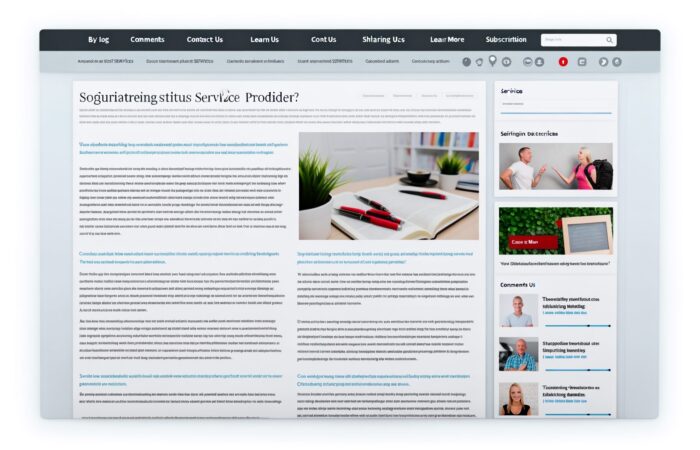Leveraging Audience Questions for Content Creation: An Introduction
Welcome aboard the ever-evolving digital content landscape! In this journey, knowing what your audience wants to read, watch, or listen to is key. However, figuring this out isn’t always straightforward. Fortunately, there’s one highly effective strategy you can employ – using audience questions to guide your content creation practices. This approach not only delivers value to your readers but also builds a stronger connection between you and your audience.
Why Audience Questions Matter
Audience questions are more than just queries; they’re a goldmine for content creators. They represent the concerns, curiosities, and interests of your audience. And when you address these in your content, you increase its relevance and value.
- Relevance: Responding to audience questions ensures that your content is relevant. It’s directly addressing what your audience wants to know.
- Value: By answering these queries, you’re providing solutions to your audience’s problems. This makes your content valuable and useful.
Building Connection through Content
Moreover, leveraging audience questions can help build a stronger bond between you and your readers. When you respond to their queries, you’re essentially acknowledging their input and showing that their opinion matters. This fosters a sense of community and makes them feel valued and heard.
Enhancing SEO Efforts
Let’s not forget the SEO benefits. When you create content based on your audience’s questions, you’re likely using the very keywords they’re searching for. This can potentially improve your search engine rankings and visibility.
A Two-Way Communication Channel
Traditionally, content creation has been a one-way street – creators produce content, and consumers absorb it. But with the rise of digital platforms, there’s been a significant shift. Now, it’s about two-way communication. As content creators, we can – and should – listen to our audiences, interact with them, and use their input to inform our content. And that’s precisely where audience questions come into play.
Unlocking the Potential of Audience-Driven Content
In the next few sections, we will delve into how you can identify common questions from your audience, use tools to gather these insights, analyze the questions to identify content gaps, and create engaging content from these insights. We’ll also share successful case studies and provide tips to keep the conversation going.
Remember, the goal here is not just to create content but to create meaningful content that resonates with your audience. And leveraging audience questions is a powerful way to do just that. So, let’s start this exciting journey together!
Identifying Common Questions from Your Audience
Accessing the pulse of your audience’s needs and interests is a powerful way to shape your content strategy. One of the most insightful methods to achieve this is by tuning in to the questions your audience is asking. Whether they’re seeking advice, attempting to solve a problem, or merely feeding their curiosity, these questions can serve as a goldmine for your content creation.
Figuring out what your audience is asking may sound complicated, but it doesn’t have to be. Here are a few straightforward ways to determine the questions your audience frequently asks:
Use Your Website’s Comment Section
Your website’s comment section is more than just a platform for random chatter. It’s a direct line to your audience’s thoughts. Look out for recurring questions or topics that come up. They are a clear indication of what your audience wants to know more about.
Leverage Customer Service Interactions
Interactions from your customer service channels—emails, phone calls, live chat—are an untapped source of valuable questions. Keep a record of the queries that come up, and you’ll quickly notice recurring themes or questions that your audience wants answers to.
Utilize Social Media Platforms
Social media is a treasure trove of audience questions. Observing the questions asked on your posts, in direct messages, or discussed in relevant groups or threads can provide you with an abundant source of content ideas.
Conduct Surveys or Polls
If you’re still unsure, directly ask your audience. Surveys or polls make it easy for your audience to share their thoughts and questions. It not only gives you a clearer insight but also makes your audience feel valued and heard.
Remember, the key is to actively listen. The more attention you pay to your audience’s questions, the more accurately you can cater to their needs through your content.
Now, it’s not just about identifying the questions. It’s also about understanding them. Are they general questions, specific queries, problem-related, or curiosity-driven? Recognizing the nature of these questions can help you shape your content to better address your audience’s needs.
Identifying common questions from your audience is the first step in creating content that resonates and engages. By understanding your audience’s needs and interests, you can create content that not only answers their questions but also sparks their interest, engages them and ultimately, builds a stronger connection between your brand and your audience.
Tools and Platforms for Gathering Audience Insights
Engaging in a dialogue with your audience is key to understanding their questions and needs. Fortunately, there’s a variety of tools and platforms that can help you gather these insights. Let’s dive in and explore some of them.
Social Media Channels
Let’s start with social media. Social media platforms are a goldmine for gathering audience insights. Platforms like Facebook, Instagram, Twitter, and LinkedIn offer features such as polls, Q&A stickers on stories, and comment sections that can help you understand what your audience wants to know.
- Facebook Groups: These are great places to interact with your audience. You can ask questions or create polls to understand their needs.
- Instagram Stories: The Q&A sticker feature on Instagram Stories is a fun and interactive way to solicit questions from your audience.
- Twitter Chats: Hosting a Twitter chat can generate a buzz around a specific topic. It’s a real-time opportunity to hear directly from your audience.
Survey and Feedback Tools
Another effective way to gather audience insights is through survey and feedback tools. Tools like Google Forms, SurveyMonkey, and Typeform allow you to create detailed surveys that can be shared via email or social media. Ask open-ended questions to gain deeper insights into what your audience is interested in.
Audience Analytics Tools
Platforms like Google Analytics and Semrush offer insightful data about your audience’s behaviour on your website. This can help you identify the topics and types of content that resonate with them the most.
Email Marketing Platforms
Finally, let’s not forget email marketing platforms. Tools like Mailchimp and Constant Contact provide features that allow your audience to respond directly to your emails. This can be an excellent source of rich, detailed feedback.
Remember, the goal is to listen to your audience. By leveraging these tools, you can gain valuable insights that help you create content that resonates with your audience and answers their biggest questions.
Analyzing Questions for Content Gaps and Opportunities
Every question from your audience is like a hidden treasure – a gold nugget indicating where you need to dig to find a content gap or a new opportunity. To leverage this treasure trove of insights effectively, you need to know how to analyze your audience’s questions. So let’s dive in!
Identify the Themes
Step one: identify recurring themes. Pay attention to the common strands in the questions. Is your audience repeatedly asking about a specific product feature, a specific industry trend, or maybe a common headache they face? This could be a signal that your content needs to address these areas more thoroughly.
- For example, if you’re running a digital marketing agency and your audience constantly asks about SEO practices, that’s a clear indication you should create more content around this area.
Spot the Knowledge Gaps
Step two: spot the knowledge gaps. When your audience asks basic questions about a particular topic, it means they may not be finding the answers they need on your website or platform. These questions mark areas where your content could be falling short or completely missing the mark.
- For instance, if you’re a tech company and queries about how to use a particular software are frequent, that’s a clear sign you need to develop more user-friendly guides and tutorials.
Discover New Content Opportunities
Step three: discover new content opportunities. Sometimes, the questions from your audience can lead you to entirely new content ideas that you hadn’t considered before. Look for unconventional or out-of-the-box questions that could be turned into unique and compelling content.
- Imagine you’re a fitness trainer and someone asks about exercises suitable for people with desk jobs. This can inspire you to create a series of posts or videos on “Fitness for Office Workers.”
Anticipate Future Content Needs
Step four: anticipate future content needs. Audience questions can also give you a sneak peek into future trends. If you notice a spike in questions around a new topic, it might be worth preparing content to meet this emerging interest.
- Suppose you’re a travel blogger and you have started to receive questions about eco-tourism. It might be time to research and produce content on sustainable travel.
In conclusion, audience questions are an untapped reservoir of insight. They help you uncover content gaps, identify new opportunities, and anticipate future trends. So, start paying closer attention to your audience’s queries. They might just lead you to your next big content hit!
Strategies for Creating Engaging Content Based on Audience Questions
One of the coolest things about leveraging audience questions for content creation is that it allows you to tune into what your audience genuinely wants to know. It’s an excellent opportunity to respond to their queries, provide insight, and build a deeper connection. Here are some strategies for crafting engaging content based on audience questions:
Create Direct Response Content
Let’s start with the most straightforward approach: creating content that directly answers your audience’s questions. This could be in the form of a blog post, video, podcast, or even an infographic. The key here is to ensure that your response is informative, clear, and concise, but also engaging.
Develop a FAQ Section
A FAQ (Frequently Asked Questions) section can be a goldmine for content ideas. By gathering the most common questions from your audience and providing answers in a simple and easy-to-understand format, you’re creating a valuable resource for your audience. This not only positions you as an authority in your field but also helps in improving your website’s SEO.
Host Q&A Sessions
Another engaging way to address audience queries is to host a Q&A session. This could be a live session on social media platforms where you answer questions in real-time, or a recorded video where you answer pre-submitted queries. These sessions allow you to interact with your audience directly and add a personal touch to your content.
Create a Series or a Course
If a particular topic sparks a lot of questions, why not develop a series or a course around it? This not only lets you delve deeper into the subject matter but also gives your audience a comprehensive understanding of it. Plus, it’s a great way to keep your audience coming back for more!
Incorporate Audience Questions in Your Newsletter
Newsletters are a fantastic way to stay connected with your audience. Incorporating a section where you address a few audience questions in each edition can make your newsletter more interactive and engaging. Plus, it shows your audience that you value their input and are willing to help them out.
Remember, the key to creating engaging content based on audience questions is to listen. Pay attention to what your audience is asking, and respond in a way that is informative, engaging, and true to your brand. It’s not just about answering a question; it’s about building a relationship.
Case Studies: Successful Content Inspired by Audience Queries
Understanding the power of audience interaction is one thing, but seeing it in action is quite another. Here are a few illustrative case studies where brands have successfully leveraged audience questions to create engaging content.
Airbnb’s Neighborhood Guides
Travel giant Airbnb turned to its audience to create its Neighborhood Guides. Instead of guessing what information visitors would want, they solicited questions about various destinations. The end product? Detailed, user-driven guides that provide valuable information for travelers.
Quora’s Blog Posts
The question-and-answer platform Quora has an interesting approach to build its blog content. They regularly scour the site for common and interesting questions posed by users, then turn these questions into detailed blog posts, resulting in highly relevant, engaging content.
Mozilla’s Knowledge Base
Software community Mozilla uses audience queries to build its extensive knowledge base. They keep track of common questions and issues reported by users and use this information to create informative articles and resources. This proactive approach not only addresses user concerns but also reduces the workload on their support team.
Shopify’s Academy
E-commerce platform Shopify launched Shopify Academy in response to the common questions and challenges faced by their audience. The academy offers free online courses, workshops, and training materials to help users build successful online businesses. The content is highly tailored to the needs of their users, reflecting the questions and challenges they commonly face.
Glossier’s Product Development
Beauty brand Glossier takes audience interaction to a whole new level. Rather than just using audience questions for content creation, they use it to influence product development. They constantly engage with their audience on social media to understand their skincare and beauty needs, which in turn guides their product development and marketing strategies.
These examples showcase how listening and responding to your audience’s queries can not only inform your content strategy but can also translate into tangible business results. The key takeaway? Never underestimate the power of a well-answered question. Your audience’s curiosity could be the key to your content’s success.
Tips for Continuously Engaging and Soliciting Questions from Your Audience
One of the most effective ways to ensure content remains fresh, relevant, and engaging is by encouraging your audience to ask questions. Their curiosity and need for information can fuel your content creation, granting it the staying power to attract more viewers and boost engagement. Here are some practical advice and actionable strategies for continuously sparking a dialogue with your audience.
Be Proactive in Starting Conversations
Don’t just wait for your audience to interact. Initiate the conversation. Ask thought-provoking questions related to your content to stimulate discussion and encourage your audience to share their thoughts. This can be an excellent opportunity to collect their questions and discover what they want to know more about.
Utilize Social Media
Platforms like Facebook, Instagram, and Twitter are excellent tools for engaging with your audience. Regularly post updates, teasers, or behind-the-scenes snapshots, and always remember to invite your followers to comment, share, and ask if anything piqued their interest. Polls and Q&A sessions are also great means to solicit audience queries.
Keep a Regular Check on Comments
Your blog comments, forum threads, and social media responses can be a goldmine of audience questions. Regularly monitor these channels and make an effort to respond to your audience. When they see you value their input, they’re more likely to engage more and ask more questions.
Offer Incentives for Engagement
People love freebies and rewards. Consider running contests or giveaways that require your audience to ask a question or contribute an idea to participate. This kills two birds with one stone – you get valuable insights, and your audience feels appreciated.
Maintain Transparency
Openness fosters trust, which in turn encourages engagement. Being transparent about your processes, challenges, or successes can inspire your audience to ask more in-depth questions, providing more avenues for content creation.
Create a Safe and Respectful Space
Create a community where your audience feels safe to voice their thoughts and ask questions without fear of ridicule or negativity. A positive and respectful environment is vital for maintaining continuous engagement.
In conclusion, constant interaction is key to keeping the conversation going with your audience. Encourage them to ask questions, provide feedback, and share their thoughts. In doing so, you’re not only enriching your content but also building stronger relationships with your audience.











No Comment! Be the first one.